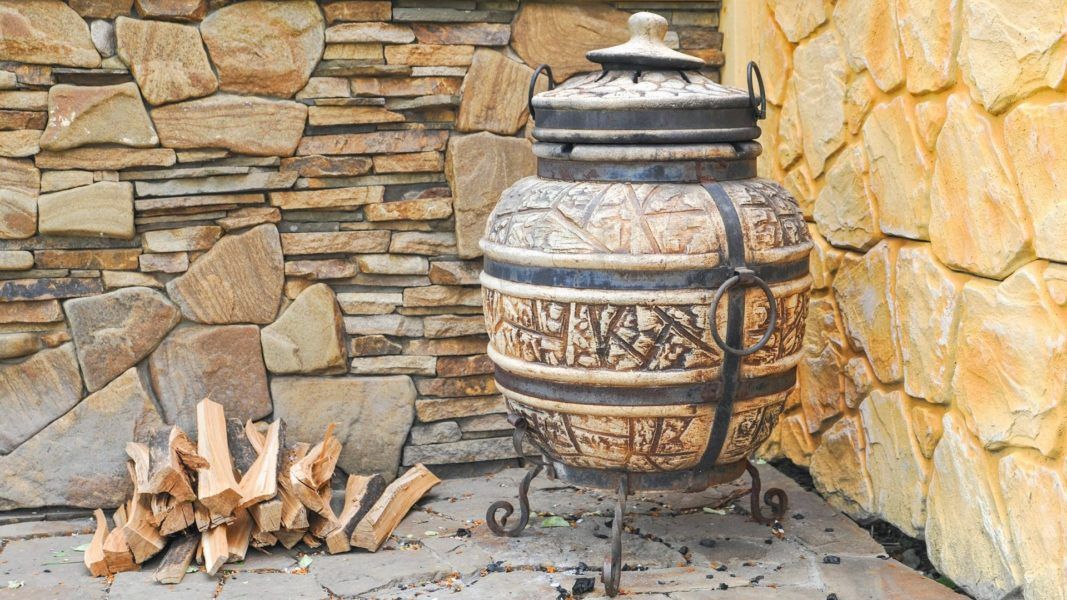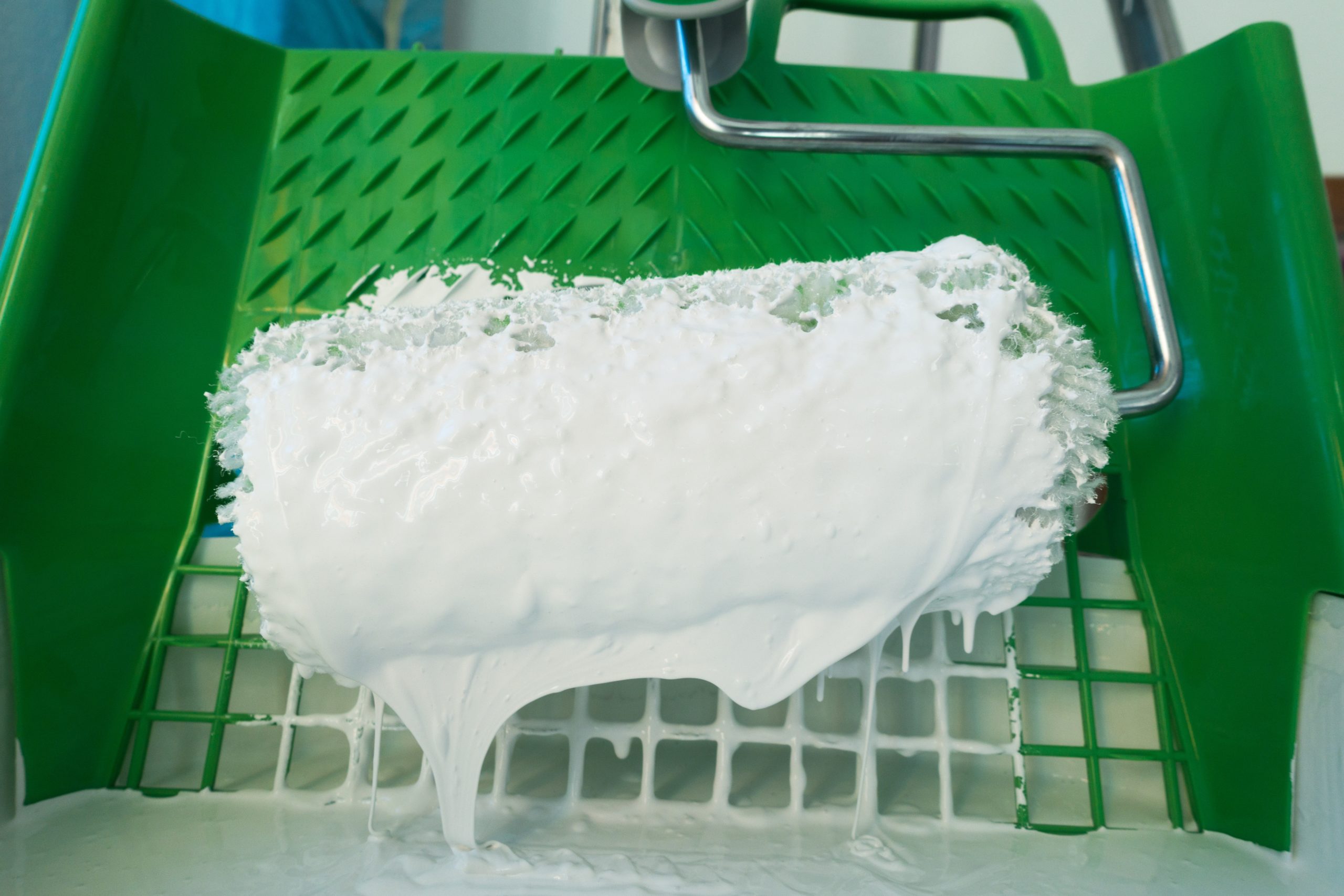Rating of the best nakiri knives for 2025

For a samurai, the sword is part of the warrior. The steel katana had several layers with a certain amount of carbon. The secrets of technology have been passed down through the generations. In terms of strength, sharpness and anti-corrosion qualities, they had no equal. The city of Sakai in Japan was famous for its masters of traditional edged weapons; this city is considered the birthplace of Nakiri. With the end of the Second World War and the ban on the production of weapons, craftsmen continue to use their secret knowledge in the manufacture of kitchen cutting objects.
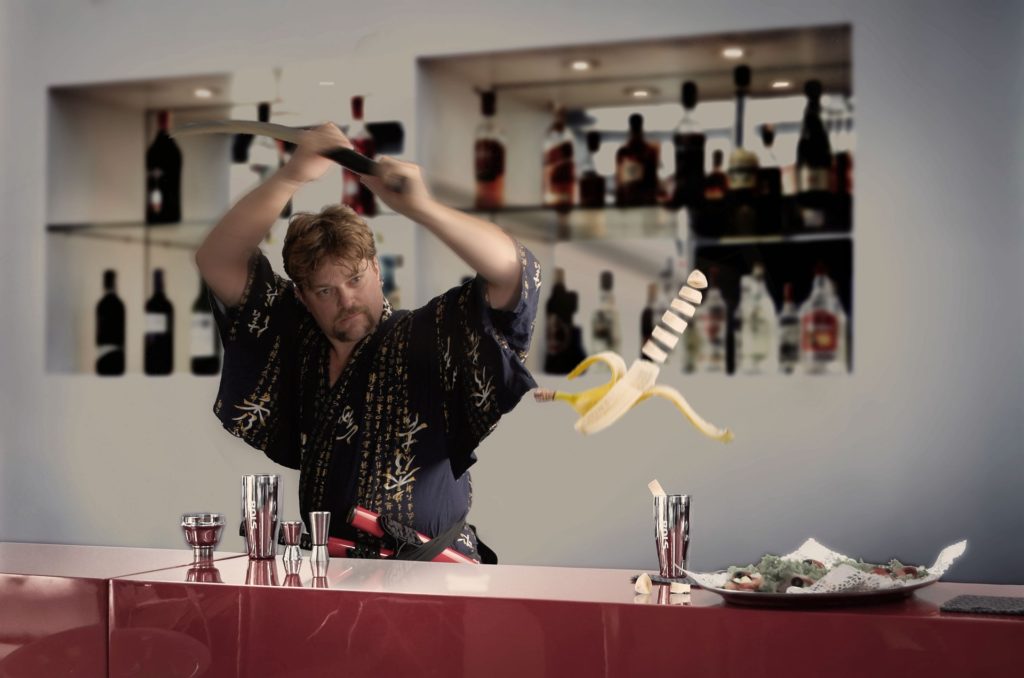
Content [Hide]
About Japanese knives
The following types of Japanese knives can be named:
- Usuba, very similar in appearance to Nakiri, but more expensive, they are somewhat wider and heavier, designed for professionals;
- Deba for seafood has 5 varieties that differ in the type of sharpening, length, number of cutting sides, real masters understand this;
- The Santoku can be compared to a chef's knife that handles both large cuts and thin slices equally well.

Nakiri today look the same as they did 1000 years ago: a thin strip of steel on the handle. They are used for chopping, not chopping, and are called “vegetable knives” in translation. In everyday life, such an accessory is also called a "hatchet". But often the functionality is much broader than the intended use for its intended purpose, it is difficult to stay “within the shredder” when such a “kitchen tool” is in the hands.
Universal application suitable for cutting:
- greens;
- cheese;
- meat pulp;
- vegetables;
- fruits;
- root crops;
- of bread;
- noodles;
- boneless fish fillet.
The advantage of the design is the presence of a “heel”, which simplifies the manipulation of rounded objects relative to the table surface. The blunt end allows you to hold the blade with your other hand without the risk of injury.
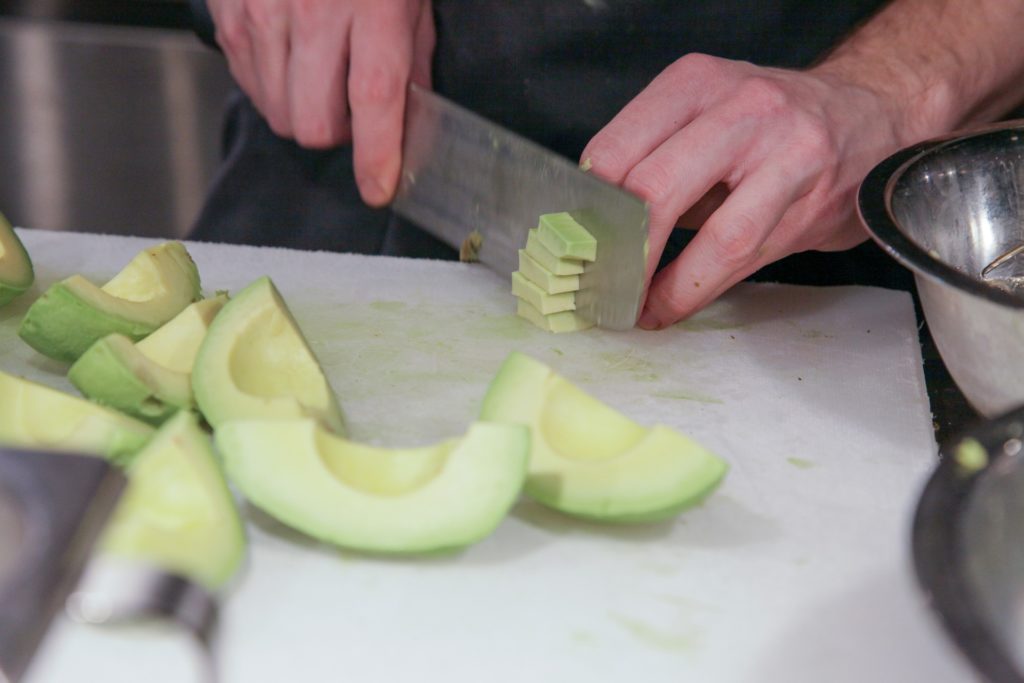
Features of the national Japanese cuisine are concentrated on the transfer of the natural taste of products, they are not replete with sauces and spices. Therefore, it is so important to preserve the integrity of the structure of the fetus by cutting it. Nakiri allows grinding, both at an angle and horizontally, using the “guillotine” method. The best properties and juices are preserved by gentle separation.
An additional advantage of Nakiri is the width of the blade, which is used as a spatula to transfer shredded products directly into the dishes.
Masters of the art of cooking advise beginners who begin working with Japanese knives to take their first steps with nakiri, the most versatile in its functionality.
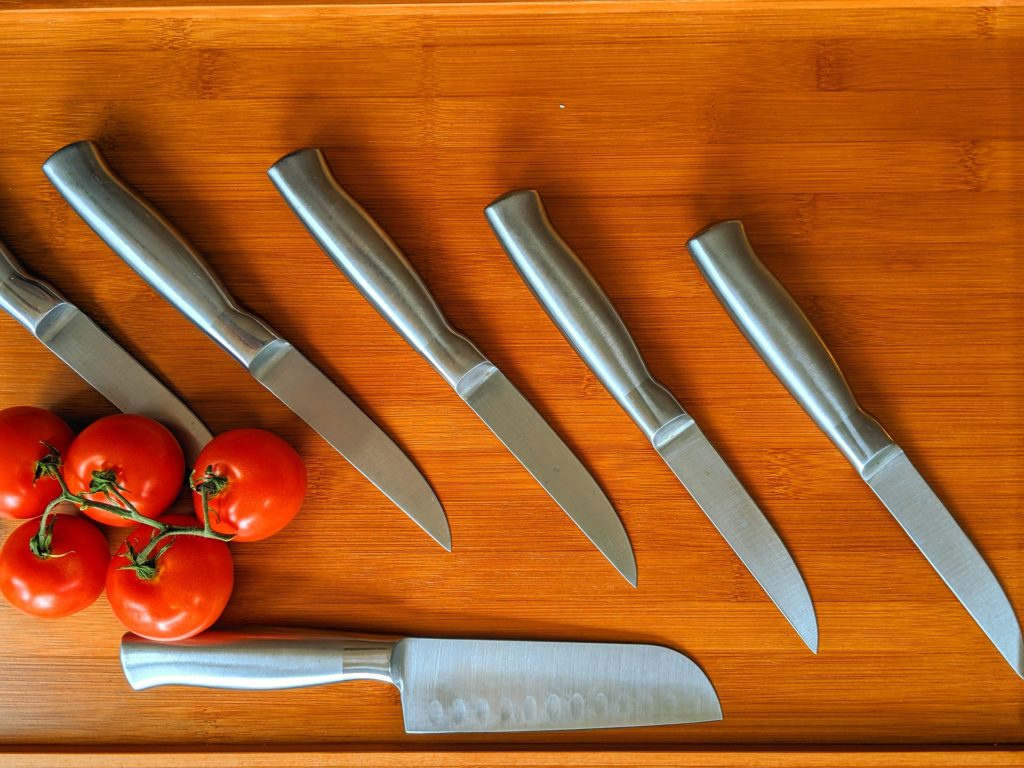
How to choose
What you should pay attention to when purchasing nakiri, it is advisable to consider in order of priority.
- Dimensions
The overall range varies between 29÷32 cm, and the length of the blade is 16÷18 cm.
- Thickness and angle of sharpening
On the butt, the thickness can be from 2 mm to 1 mm. The reduction of the blade reaches 0.2 mm. The blade is sharpened to an angle of 15°, allowing for extremely fine cutting. In some cases, the angle reaches 6 °.
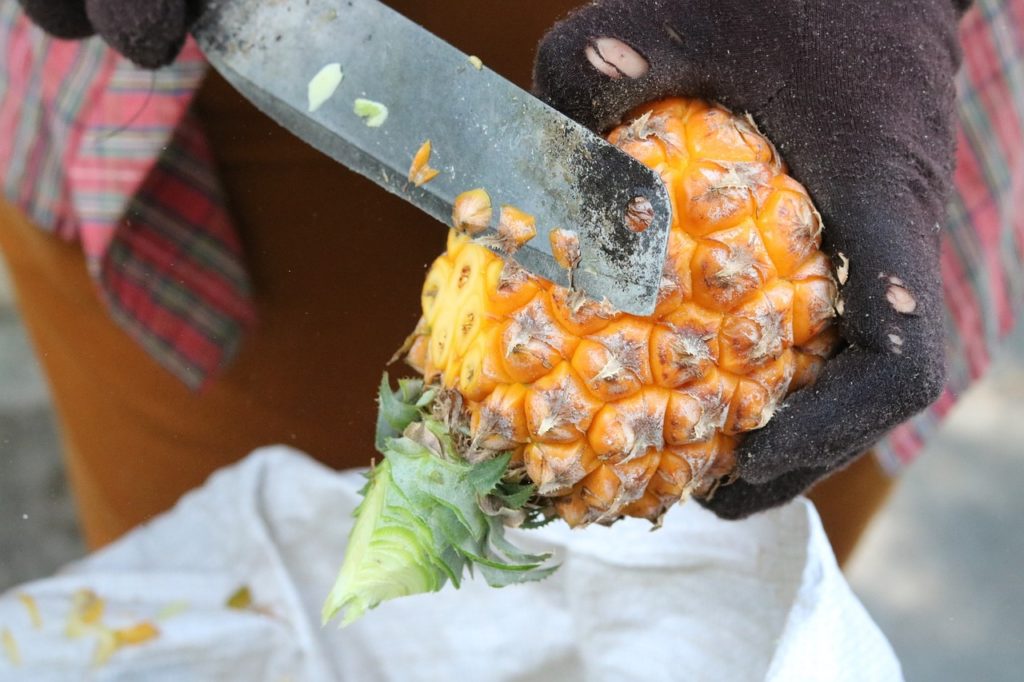
- Width
A pocket with a point platform ranges from 4.8 to 6 cm.
- Steel hardness, hardening and processing
Extraordinary strength is combined with sharpness through a steel hardness of 58 to 61 HRC. In addition to hardening the steel blade, which determines the hardness, there is also heat treatment. A certain steel grade is processed accordingly.
The hardness of nakiri differs little from the steel of a military weapon.
- Blade
The geometry of the blade determines the “loudness” of the cut, the thinner it is lowered, the “louder the sound”. Therefore, careful inspection of the cutting edge is especially important.
The blades, due to their width and increased area, have the feature of sticking the processed product to them. In this regard, on the surface you can often find a coating that resembles a pattern to level this feature. Also, certain types and lines of world manufacturers use an antibacterial coating, the benefits of which are difficult to dispute.
- Layers of steel
A solid fragment, hardened to the limit of density, is the basis of the blade.
But there can be several layers, while the hardest grade is located in the center, a lightweight lining is made along the edges.
- Handle
Its main feature is heavy weight, it is this moment that provides the subject with the necessary balance. Comfortable grip and roundness give a comfortable feeling. The material can be both simple propylene handles and plastic, as well as rare woods, metal, micarta. Additional inlay contributes to the final cost of a kitchen accessory.
- Brand and composition
A blade from a global manufacturer does not always have the qualities necessary for a Japanese knife. It is important that there is a marking, steel characteristics. Carbon, alloying additives in the form of molybdenum, chromium, vanadium affect the resistance to corrosion and impact strength. The standard carbon content in the range from 0.8 to 1% directly characterizes the juiciness of the cut, its pedigree. You can trust a store that has passed the test for the originality of the trademark.
The Japanese global brand is Seki, which is also the city of the same name. From European countries, the city in Germany Solingen is known.
In order to avoid mistakes when buying, you should read the certificate of the country of origin.
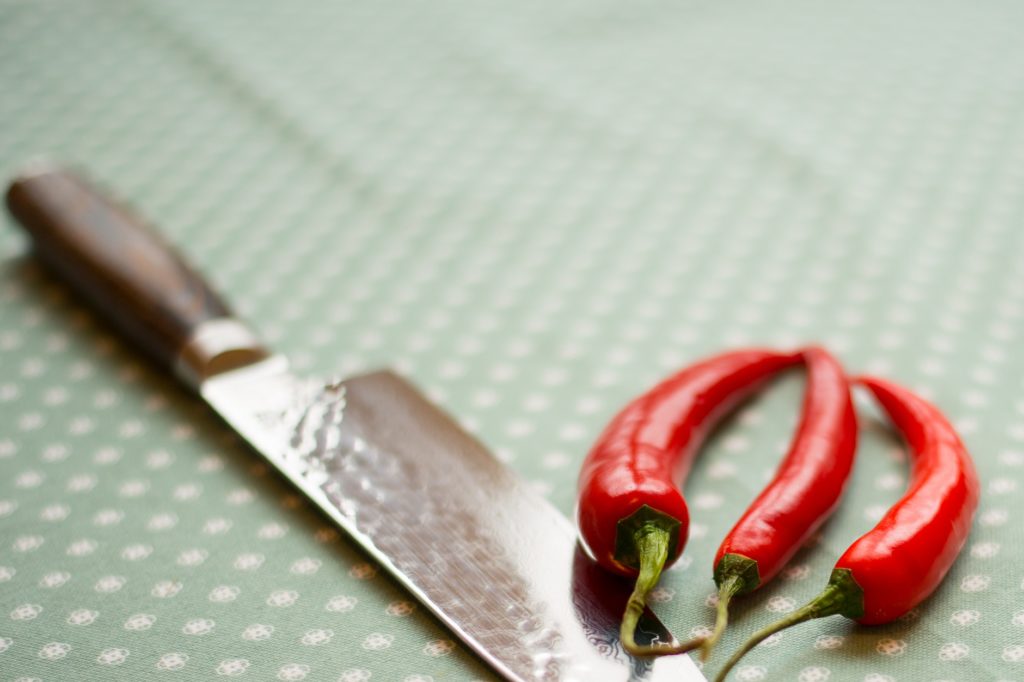
- Price
The price difference is noticeable. You can buy handmade copies of Damascus multilayer technology for several tens of thousands of rubles. For non-professionals, worthy options are available at a price of up to 3000-3500 rubles. The gift option in a case will be a good and useful gift for any celebration.
A compromise with the price approach will be the average level of geometry and high-quality steel.In this case, you should be prepared for frequent editing and sharpening. Consistent sharpness and outstanding cut significantly increase the cost.
Errors when choosing
Despite the special strength and sharpness of nakiri, its main purpose is vegetables and fruits. For manipulations with meat and fish, it is recommended to have a separate accessory in the kitchen.
Experts advise to refrain from purchasing sets; a piece-by-piece purchase will allow you to have in the kitchen only an “active” arsenal with an individual selection.
Conscientious sellers try to provide service and maintenance after purchase, which includes both a long-term warranty and sharpening.
Japanese knives require a certain skill, so it takes some time before virtuosity appears.
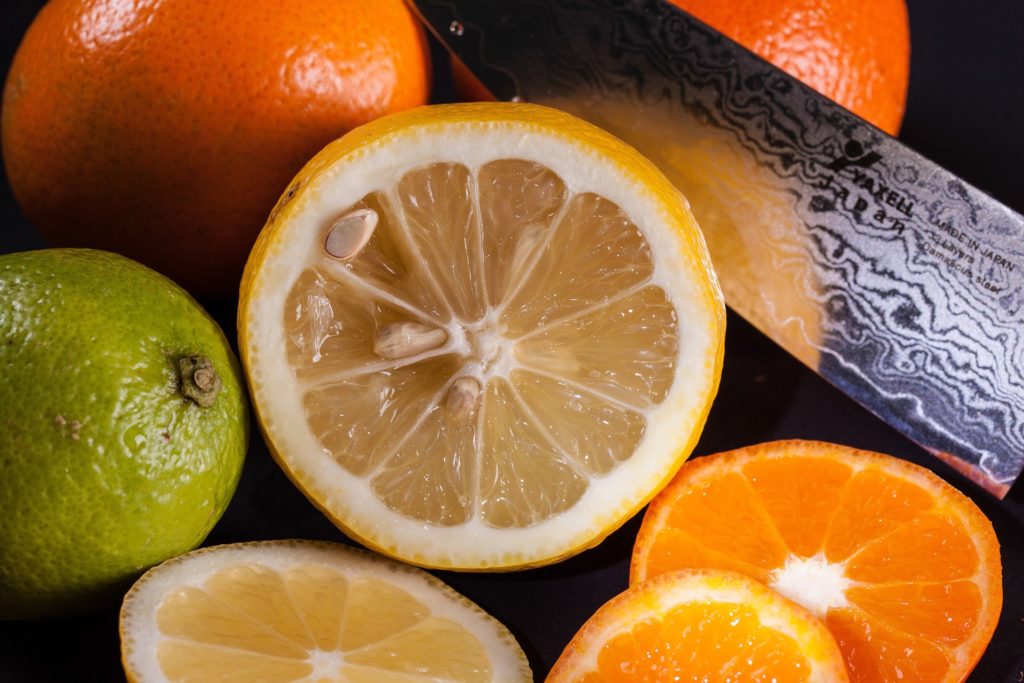
Review of the best nakiri knives
budget group
Fuji Cutlery FS 580
votes 0
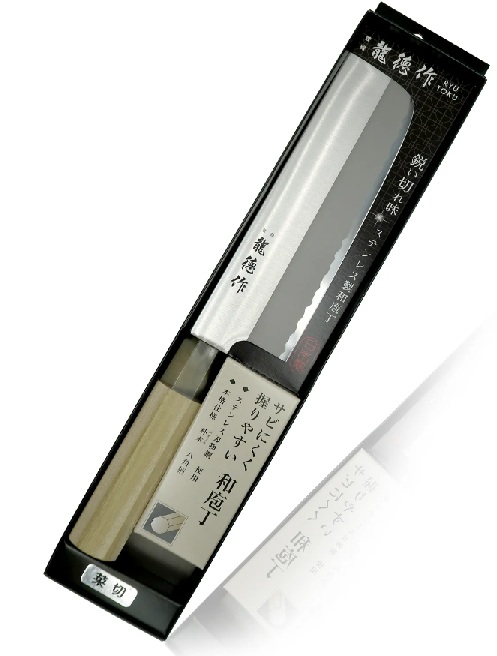
The item is made in the classic Nakiri style and shreds fruits, vegetables, root crops.
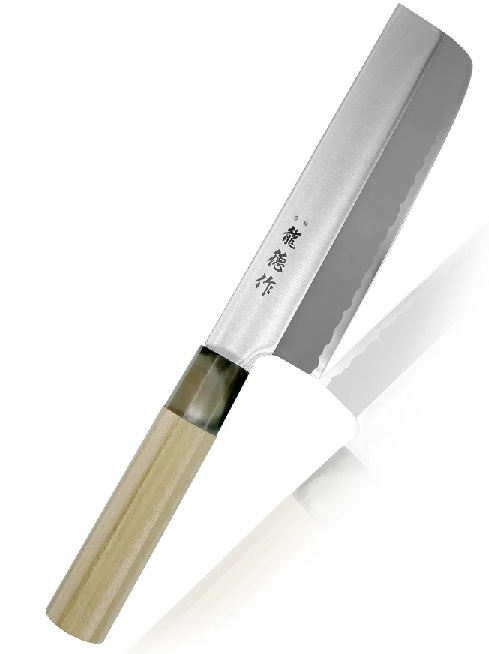
- straight blade;
- ergonomic handle;
- perfect balance of weight and size for easy handling of any fruit;
- comfortable grip for maximum control of slice thickness;
- guarantee of fast operations;
- share of professionals and home cooking;
- a real assistant for the cook;
- simple operation;
- easy care;
- for long-term use without discomfort.
- users note the likelihood of the juicy surface of the fruit sticking to the pocket when cutting.
Samura Golf SG-0043A
votes 0
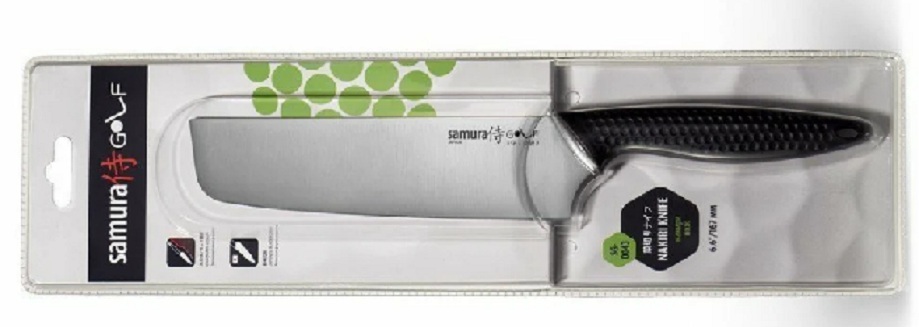
The well-known manufacturer Samura is represented by a wide Golf series, which is especially popular in home cooking.
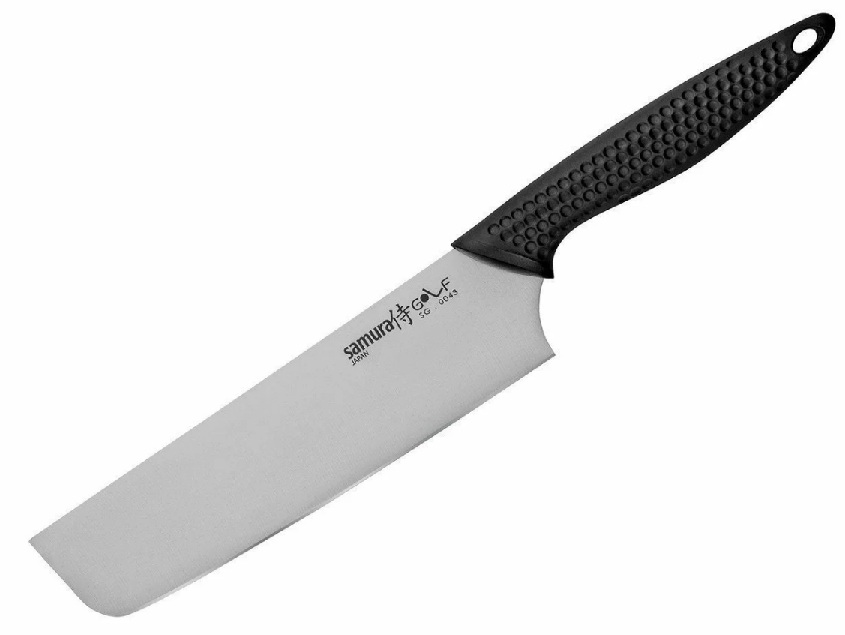
- keeps sharpening perfectly;
- long warranty period up to a year;
- material "stainless steel" AUS-8 with a hardness of 58;
- made in 1 layer;
- lightweight model weighing 103 grams;
- the handle is made of high strength polypropylene;
- the presence of anti-slip relief on the handle;
- democratic price;
- suitable for household use;
- made in China.
- no claim to style.
Model from AliExpress GrandSharp
votes 0
The brand is presented as a Damascus nakiri made of Japanese steel and has a 98% positive feedback.
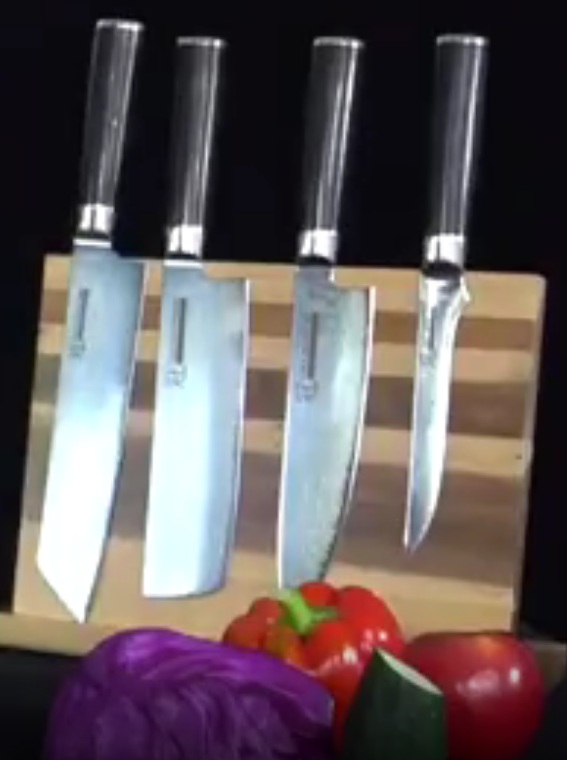
- made of G10 steel;
- total weight of only 270 grams;
- blade with a characteristic blade pattern;
- the highest grade of metal;
- certified products;
- made of three layers;
- easy ordering with free shipping;
- durability guarantee;
- anti-corrosion qualities;
- cuts paper along a given contour;
- returning customers for their favorite brand.
- missing.
Tescoma Azza
votes 0
A traditional Japanese style kitchen appliance is recommended for cooking Asian dishes with a lot of ingredients.
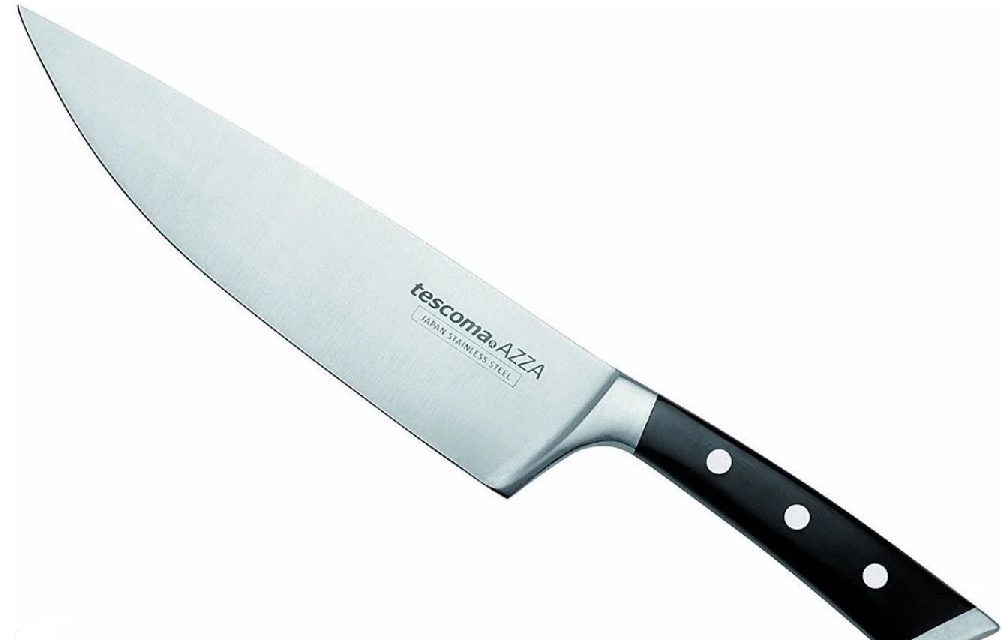
- whole linen forging;
- excellent sharpening;
- high strength;
- massive handle rivets;
- long warranty of 120 months;
- winner in the category "customer's choice";
- ideal geometry;
- the best value for money.
- not detected.
SAMURA SHADOW SH-0043
votes 0
One of the most popular and affordable hatchets in the budget section.
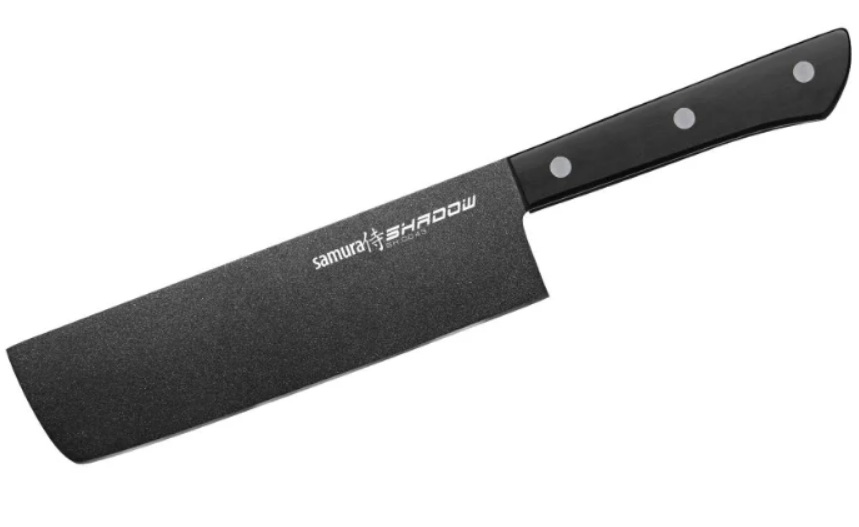
- Leader in the category "Customer's Choice";
- for herbal products;
- careful shredding;
- ideal for greens;
- with a special coating on the blade Black anti-slip coating to protect against scratches and prevent sticking of the product surface;
- the blade has a width of 5 cm with a thickness of 16 mm;
- the lightness of 131 grams is especially liked by the hostesses;
- recommended for cutting frozen foods;
- reliable triple rivets on the handle.
- missing.
PAUDIN Pro
votes 0
Hatchet for professional chefs is focused on seafood, sushi, fish fillets.
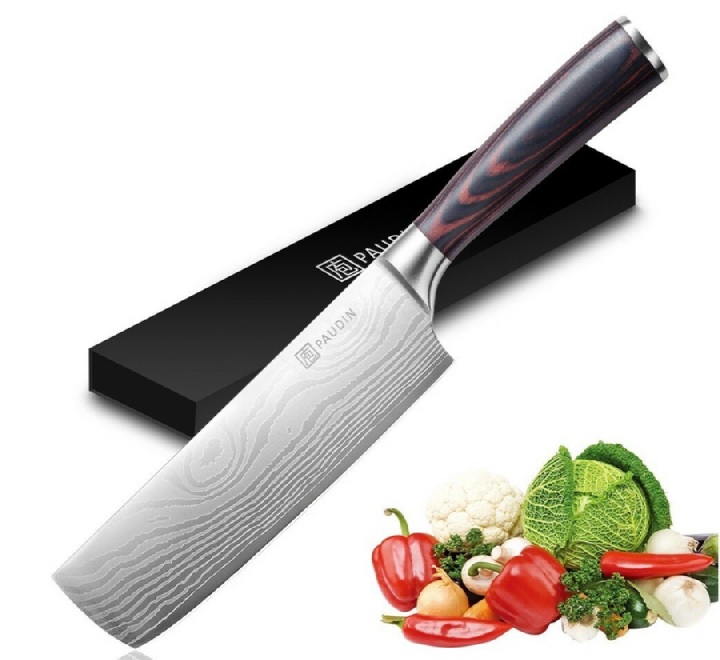
- with antibacterial coating;
- the presence of a stylish case;
- wood handle impregnated with acetal resin;
- with anti-stick effect;
- weight is 253 grams;
- high quality manufacturing materials.
Medium price segment
Positions of the category apply for a semi-professional, professional level. It is important to remember that their use requires a certain skill in order to avoid injury, as the blades have a serious cut.
TOJIRO Western Knife
votes 0
The main advantage of the knife is a three-layer blade with a Takefu 61 HRC central blade and 420 hardness linings.
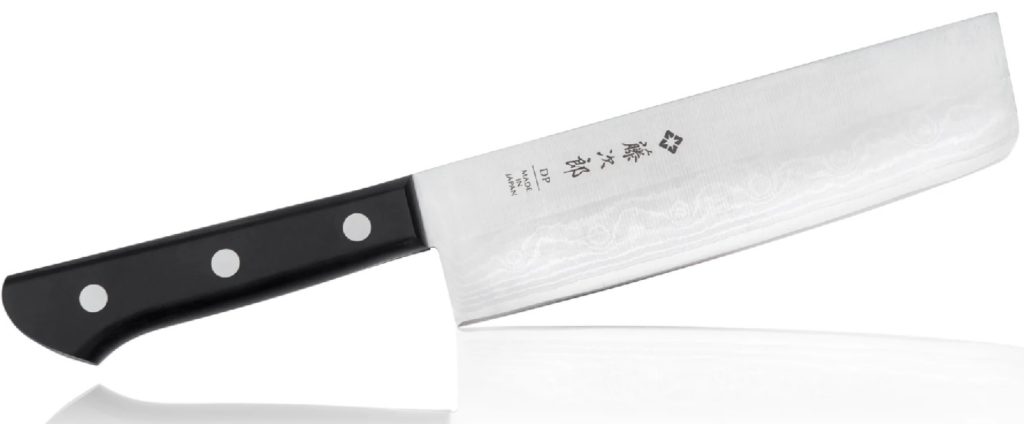
- with reinforcement of the connecting area of the handle with stainless steel;
- lightness of wood overlays of the handle;
- not subject to destruction by fungi, mold, detergents;
- triple rivets on the facings;
- recommended for professionals;
- damascus steel.
- not found.
Kasumi 40724610 36847
votes 0
The popular manufacturer is represented by the Tora series, in which reliable quality is combined with democratic performance.
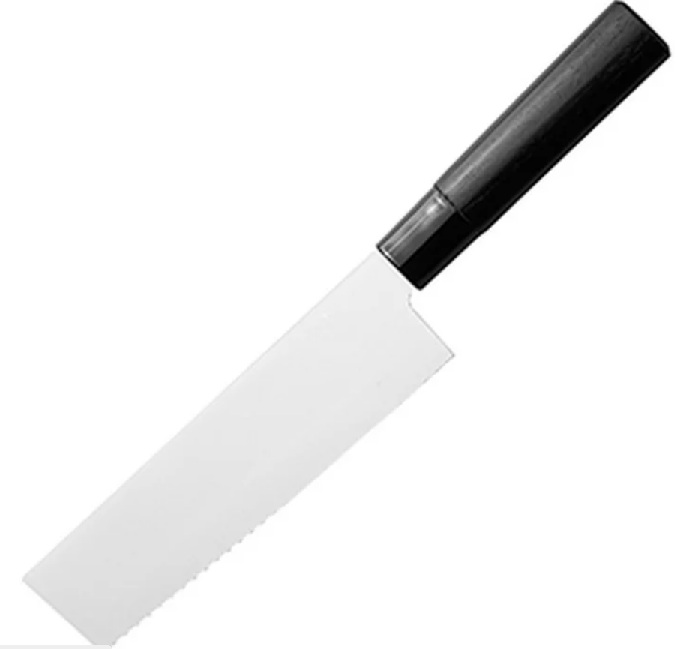
- wear resistance;
- long service life;
- without the need for regular sharpening;
- blade sharpness;
- high quality materials;
- affordable price;
- Can be washed in the dishwasher;
- positive consumer feedback.
- without anti-slip coating on the handle.
GIPFEL
votes 0
The unique gift version is made from VG 10 grade, which has 73 layers.
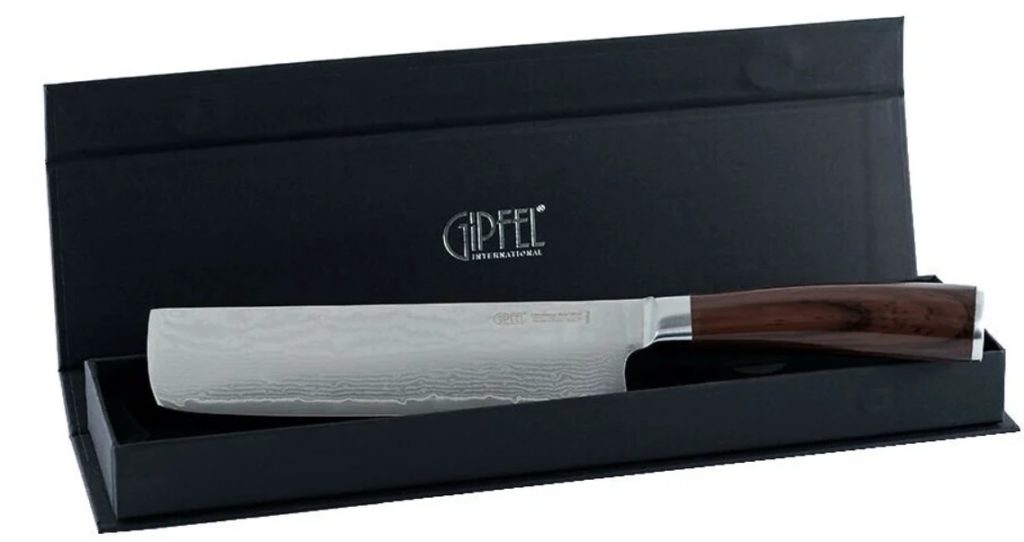
- does not need sharpening;
- damascus steel;
- food does not react upon contact with metal;
- no deformation in long-term use;
- not afraid of interaction with water;
- spectacular appearance;
- the presence of a gift box;
- available in the online store.
- no.
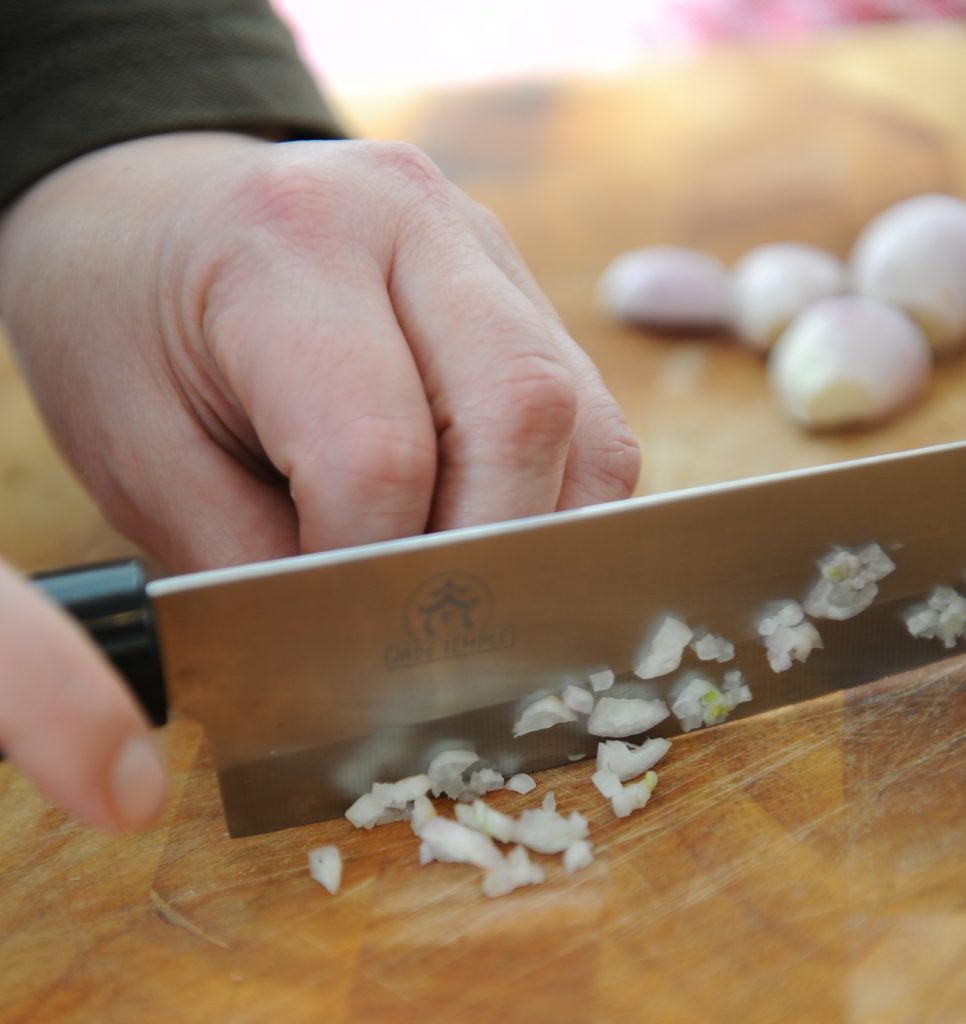
Premium quality nakiri knives
High class requires careful use in terms of destination. Depending on the number of knives in the kitchen, their functionality is determined with the ability to ruin the object.
KAI Seki Magoroku Composite MGC 0428
votes 0
The vegetable cutter has several steel textures and grades - from a bevelled polished bulge through a smooth transition to a rounded back with a final tip.
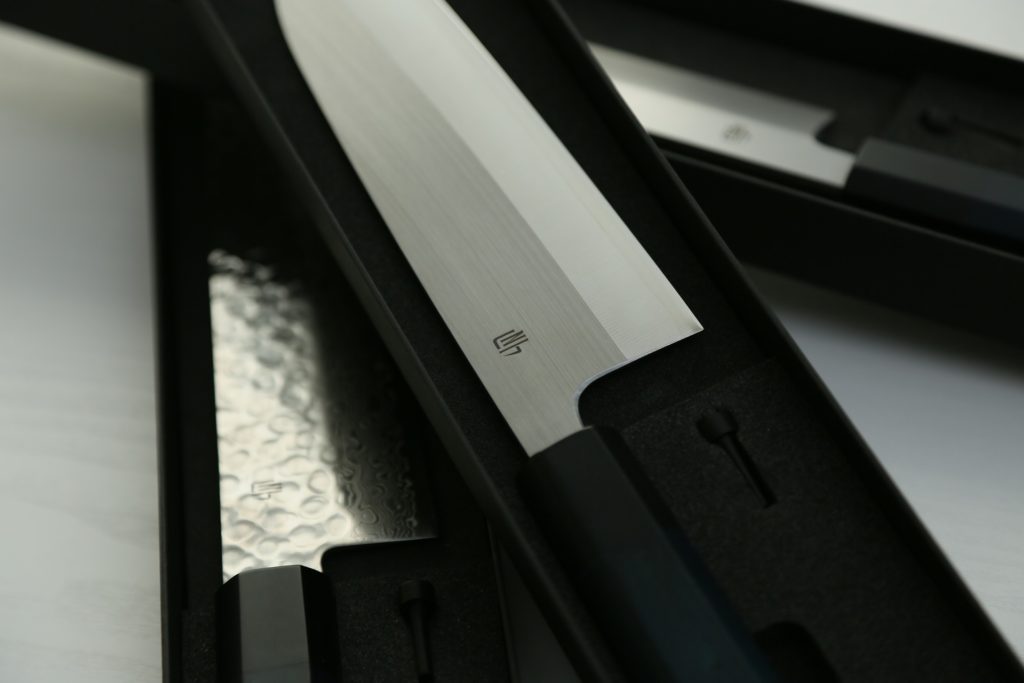
- with sharpening #10000;
- high strength VG-MAX;
- double-sided sharpening;
- stability of the cutting edge;
- resistance to corrosion;
- high content of vanadium, chromium in the composition;
- handle symmetry for right-handers and left-handers;
- with a shift in the center of gravity towards the blade - as a guarantee of dynamism;
- high percentage of carbon presence for maximum strength;
- safe butt;
- ergonomics;
- saturation of several layers of wood with synthetic resins for the strength of the shape of the handle and resistance to moisture.
- no.
Sakai Takayuki 07393
votes 0
Stylish and functional cutting accessory is made exclusively strictly. All component bowls are reinforced and amaze with thoughtfulness of details.
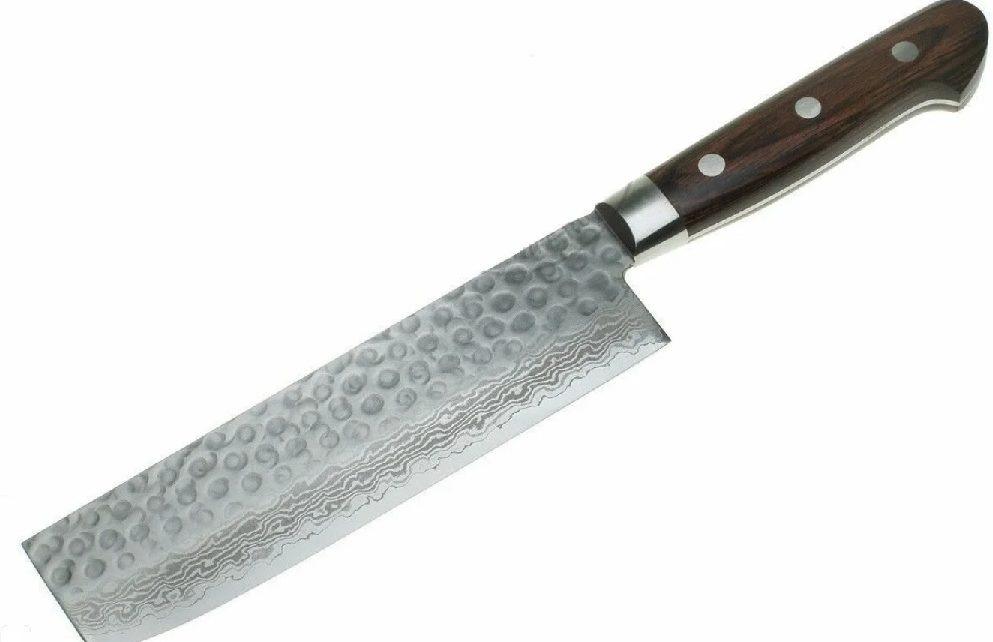
- the transition from the blade to the handle is reinforced with a steel insert;
- with 3 powerful rivets on the facings of wood;
- with a special anti-stick coating;
- Japanese production;
- can be ordered online;
- a worthy item for a modern kitchen;
- Damascus steel blade with 33 layers.
- not found.
How to DIY
Fans of piercing and cutting home-made items have a place to turn around. The Youtube channel offers a series of instructions with a step-by-step algorithm for making a Japanese hatchet from various source materials. Craftsmen make nakiri at home from springs, corners, blades from a sawmill, a wrench. Not every man is ready for such frills, but whoever undertakes, he eventually amazes others with the result.
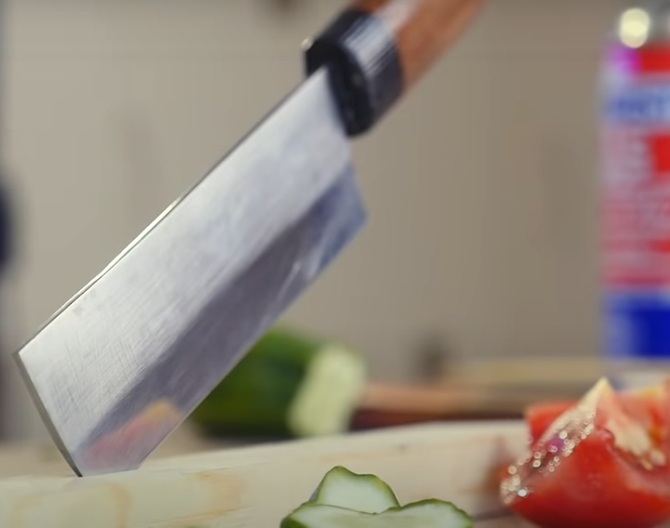
As they say, the Japanese would have rounded eyes.
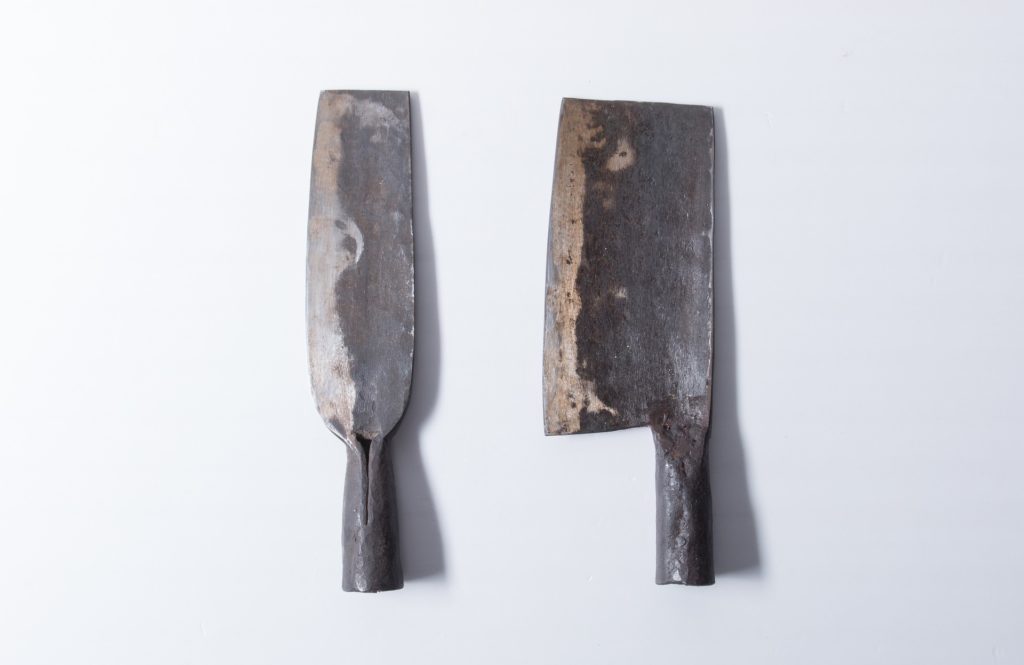
| Comparison table of the best | ||||||
|---|---|---|---|---|---|---|
| 1. | budget class | |||||
| Name | Overall length, cm | Blade, length, cm | Handle | Blade hardness HRC | Average price, rub. | |
| Fuji Cutlery | 30 | 16 | wood | 57-59 | 3500 | |
| Samura Golf | 30.5 | 16.7 | polypropylene | 58 | 2400 | |
| grandsharp | 31 | 18.5 | metal | 60 | 3300 | |
| Tescoma Azza | 30 | 18 | plastic | 55-57 | 2200 | |
| PAUDIN Pro | 27 | 17 | wood with resin | 54 | 2500 | |
| SAMURA SHADOW | 30 | 17 | plastic | 58 | 1700 | |
| 2. | Mid-price segment | |||||
| TOJIRO Western Knife | 29 | 16.5 | wood | 61 | 11000 | |
| Kasumi | 29.5 | 16.5 | plastic | 61 | 5000 | |
| GIPFEL | 32 | 18 | −”− | 12000 | ||
| 3. | Premium class | |||||
| KAI Seki Magoroku Composite | 32 | 16.5 | pakka wood | 61 | 22800 | |
| Sakai Takayuki | 32 | 16 | wood | 61 | 15000 |

Conclusion
Multifunctional kitchen appliances have ceased to be the privilege of high professionals. Convenience and comfort came to every home. The famous Japanese knives, which can replace a number of our grandmothers' kitchen utensils, are available to any culinary specialist. The question "where to buy" is no longer relevant. You can use specialized stores or departments in shopping malls, or you can simply order via the Internet without leaving your home. The abundance of products and the availability of recipes for national dishes from all over the world invite you to a new journey of tastes. A real assistant in exciting culinary experiments, which takes care of all the main work of cutting and chopping, is a kitchen knife.Nakiri is one of the best representatives of the cutting "brotherhood", with excellent characteristics of strength, sharpness, functionality.
new entries
Categories
Useful
Popular Articles
-

Top ranking of the best and cheapest scooters up to 50cc in 2025
Views: 131650 -

Rating of the best soundproofing materials for an apartment in 2025
Views: 127688 -

Rating of cheap analogues of expensive medicines for flu and colds for 2025
Views: 124517 -

The best men's sneakers in 2025
Views: 124031 -

The Best Complex Vitamins in 2025
Views: 121938 -

Top ranking of the best smartwatches 2025 - price-quality ratio
Views: 114978 -

The best paint for gray hair - top rating 2025
Views: 113393 -

Ranking of the best wood paints for interior work in 2025
Views: 110318 -

Rating of the best spinning reels in 2025
Views: 105327 -

Ranking of the best sex dolls for men for 2025
Views: 104363 -

Ranking of the best action cameras from China in 2025
Views: 102214 -

The most effective calcium preparations for adults and children in 2025
Views: 102010

